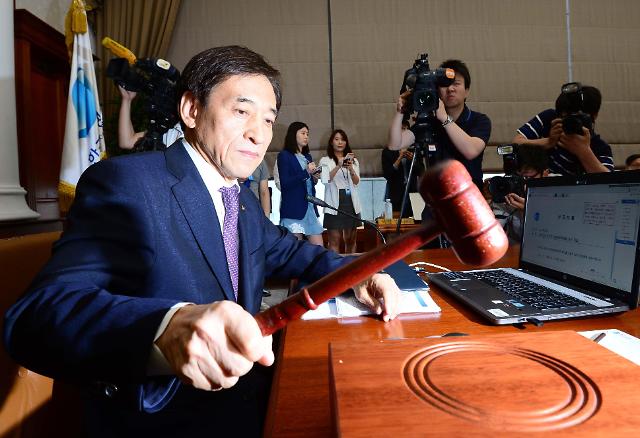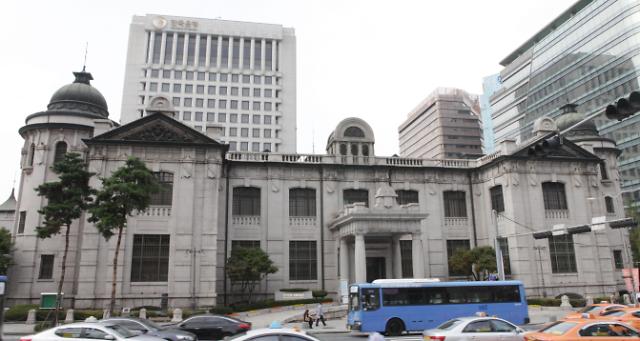
In June, the Bank of Korea (BOK) slashed the base rate by 0.25 percentage point, citing a decline in exports and domestic consumption following the outbreak of Middle East Respiratory Syndrome (MERS) in the country. The government declared a de-facto end of the MERS crisis in late July as no new case of infection with the viral respiratory disease was reported for more than three weeks.
Since August last year, the BOK has lowered the key rate by a total of 1 percentage point in an effort to bolster growth momentum.
Following is the full text of a statement the central bank issued after its Monetary Policy Committee meeting early Thursday.
"Based on currently available information, the committee considers that the trend of economic recovery in the United States has been sustained, and that the improvements in the euro area have continued as well. Economic growth in emerging market countries has, meanwhile, continued to slow. The committee forecasts that the global economy will sustain its modest recovery going forward, centering around advanced economies such as the United States, but judges that the possibility exists of its being affected by heightened international financial market volatility due to a shift in the U.S. Federal Reserve’s monetary policy and to the devaluation of the Chinese yuan, and by the weakening of economic growth in emerging market countries.
"Looking at the Korean economy, exports have continued their trend of decline but consumption and the sentiments of economic agents, after having contracted due mainly to the shock from the Middle East Respiratory Syndrome (MERS) outbreak, appear to have improved. On the employment front, the employment-to-population ratio in July maintained the same level as that during July of last year, but the trend of increase in the number of persons employed slowed and, due mainly to an expansion in job search activities, the unemployment rate rose compared to that in July last year. The committee forecasts that the domestic economy will show a trend of recovery going forward, owing chiefly to the expansionary macroeconomic policies and to the ending of the MERS outbreak, but judges the uncertainties surrounding the growth path to be high.
"Despite cuts in electricity fees, consumer price inflation registered 0.7 percent in July, the same as in June, in line mainly with expansions in the extents of increase in service prices. Core inflation excluding agricultural and petroleum product prices was 2.0 percent in July, also the same as in June. Looking ahead, the committee forecasts that inflation will continue at a low level, due mainly to the effects of the low oil prices. In the housing market, the upward trends of sales and leasehold deposit prices have continued in both Seoul and its surrounding areas and the rest of the country.
"In the domestic financial markets, influenced mostly by expectations of a policy rate hike by the U.S. Federal Reserve and by the devaluation of the Chinese yuan, stock prices have fallen and the Korean won has depreciated sharply against both the U.S. dollar and the Japanese yen. Long-term market interest rates have fallen slightly, in response mainly to interest rate movements in major countries. Bank household lending has sustained a trend of increase at a level substantially exceeding that of recent years, led by mortgage loans.
"Looking ahead, while working to sustain the recovery of economic growth, the committee will conduct monetary policy so as to maintain price stability over a medium-term horizon and pay attention to financial stability. In this process, it will closely monitor the trend of increase in household debt and external risk factors such as any shift in the U.S. Federal Reserve’s monetary policy and the financial instabilities in some emerging economies, as well as the trends of capital flows."




